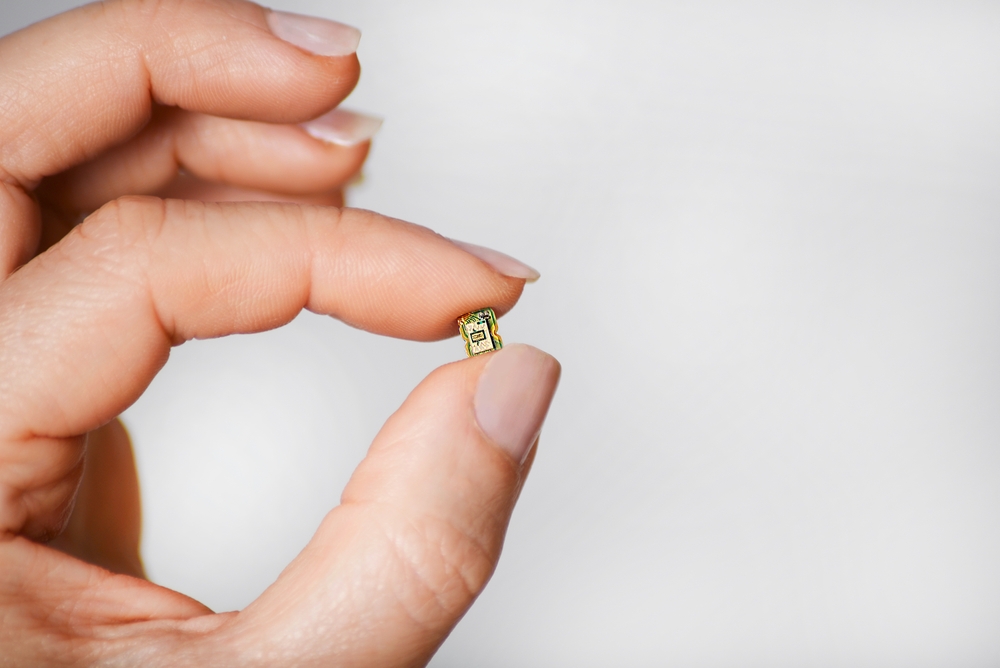Your cart is currently empty!
Inside Sweden’s Cashless Future: Thousands Opt for Microchip Implants

In Sweden, thousands of people have already taken a leap that feels straight out of a science fiction novel. They have chosen to have a tiny microchip inserted under their skin, a device that can replace everything from ID cards and keys to train tickets and credit cards. What once seemed futuristic is now an everyday reality for many Swedes, signaling how rapidly technology is reshaping human life.
The concept might sound extreme to some, yet in Sweden, the idea has caught on quickly. According to reports, more than 3,000 Swedes have had the tiny implants placed between their thumb and index finger. The devices, no larger than a grain of rice, allow users to access offices, gyms, and even pay for items with just a wave of their hand.
At its core, this movement reflects Sweden’s long-standing embrace of innovation. The nation is known for being ahead of global trends in adopting new technologies, from cashless payments to renewable energy. The growing popularity of microchip implants marks yet another bold step forward in integrating technology seamlessly into daily life.
What stands out is not only the functionality of these chips but the mindset of the people adopting them. Swedes see this as a natural evolution of convenience, privacy, and connectivity. In a society where most transactions are already digital, replacing physical cards and keys with a subdermal chip feels less like a risk and more like progress.

How the Technology Works
The microchips used in Sweden are designed to be small, safe, and efficient. They operate using Near Field Communication, or NFC, which is the same technology that powers contactless payments and key cards. Once implanted beneath the skin, usually in the hand, the chip can communicate with compatible devices nearby when held close.
The implantation process is simple and takes only a few seconds. Using a syringe similar to those used for body piercings, a trained professional inserts the chip under the skin. Once done, the device becomes part of the user’s body, requiring no maintenance or battery replacement. It remains functional for years without noticeable interference or discomfort.
Each chip can be programmed with specific data, depending on its purpose. Some individuals use them for digital identification, while others store public transportation passes, access credentials, or payment information. The level of personalization available makes the chips adaptable to individual needs.
The idea is that these chips act as a bridge between the physical and digital worlds. In practice, this means a person could leave home without keys, cards, or even a smartphone, and still move through their daily routine with ease. The technology is subtle but transformative, marking a significant shift in how humans interact with the systems around them.

Why Sweden Is Leading the Way
Sweden’s adoption of microchip implants did not happen overnight. The country has spent decades developing a culture that embraces digital innovation. With one of the highest rates of cashless transactions in the world, Swedes are already comfortable with the idea of replacing physical items with digital alternatives.
Part of the reason lies in trust. Citizens in Sweden generally have a high level of confidence in both their government and the technology companies operating within the country. This trust makes people more open to exploring new ways of living that integrate convenience and technology.
Moreover, Sweden’s tech community is vibrant and forward-thinking. Many start-ups and innovators are exploring how wearable and implantable technology can simplify daily tasks. Companies like Biohax International have become key players in this movement, providing the chips and leading demonstrations of how they can be used safely and effectively.
Culturally, Sweden also places a strong emphasis on efficiency and sustainability. Reducing plastic cards and paper tickets not only streamlines life but also cuts down on waste. The microchip movement aligns perfectly with Sweden’s environmental consciousness and its desire to push toward smarter, greener living.
Addressing Privacy and Ethical Concerns
Despite the excitement surrounding this new technology, the rise of microchip implants has sparked important conversations about privacy, security, and ethics. Critics worry that this technology could one day be used to monitor individuals or track personal data without consent. Questions about how data is stored, who has access to it, and how it could be misused are valid and ongoing.
Swedish developers and regulators are acutely aware of these concerns. Most of the current microchips do not have GPS tracking capabilities and cannot be used for surveillance. They simply transmit data when activated by a nearby reader, similar to a contactless bank card. This limitation ensures that users maintain control over when and how their information is shared.
Transparency has become a crucial factor in building public trust. Companies working in this space have emphasized open communication about the chips’ functionality and security standards. By providing clear information and voluntary participation, they aim to prevent fears of misuse.
The discussion around microchip implants mirrors broader debates about how far society should go in merging technology with the human body. While Sweden is pioneering this frontier, the ethical frameworks that emerge will likely influence how other nations approach similar innovations.

The Everyday Benefits of Being Microchipped
For those who have embraced the technology, the benefits are already tangible. Imagine entering your office without a keycard, unlocking your gym locker with your hand, or paying for lunch without reaching into your wallet. These conveniences are no longer hypothetical in Sweden. They are part of everyday life for those who have chosen to get chipped.
Many users describe the experience as liberating. It eliminates the need to carry multiple items, reduces the chances of losing important documents, and simplifies transactions. The technology essentially makes the body itself a personal identifier, streamlining countless daily tasks.
The integration extends beyond personal convenience. For businesses, the technology offers new levels of security and efficiency. Employees can access buildings or systems more seamlessly, reducing the need for manual ID verification. In healthcare, microchips could one day store essential medical data, allowing first responders to quickly access a patient’s information in emergencies.
As the chips evolve, developers are exploring even more advanced applications, including storing digital health records, verifying vaccination status, or integrating with smart home systems. The potential uses are nearly limitless, limited only by how society chooses to adopt and regulate them.
Could This Be the Next Step in Human Evolution?
The concept of integrating technology directly into the body raises a fascinating question about the future of humanity. Are these microchips a temporary convenience or the beginning of a new phase in human evolution? In Sweden, many believe it is the latter. The chips represent not just technological progress but a reimagining of what it means to be connected in a digital age.
In some ways, the microchip movement symbolizes humanity’s growing relationship with technology. From smartphones to smartwatches, humans have steadily moved toward closer integration with digital tools. The implant simply represents the next logical step, where technology becomes an invisible, integrated part of our identity.
Sociologists and futurists have begun discussing the concept of the “cyborg society” where humans and technology coexist in a seamless symbiosis. While that idea may sound dramatic, it reflects the reality that technology is no longer external. It is something people live with, through, and increasingly, within.
This trend raises philosophical questions about control, identity, and autonomy. Yet for many Swedes, it is not about losing their humanity but enhancing it. By making everyday life easier, safer, and more efficient, they see this as a tool for empowerment, not dependence.

Reflecting on a Tech-Driven Tomorrow
Sweden’s embrace of microchip implants offers a window into a possible future for the rest of the world. It challenges us to think differently about technology not as a separate force but as something that can be harmonized with human existence. The success of this movement will depend on maintaining ethical standards and ensuring technology serves humanity rather than the other way around.
What is clear is that the future is arriving faster than most expected. The Swedish example shows how societies can adapt to bold innovations when guided by trust, transparency, and curiosity. As technology continues to evolve, microchip implants might soon move from novelty to norm.
Ultimately, this story is not about chips or data. It is about people and progress. It is about the choices societies make in their pursuit of a smarter, more connected world. And as Sweden leads the way, the rest of the world watches closely, wondering whether the next great leap in human technology might start with something as small as a grain of rice.
